Filipino cuisine has reached new levels of popularity and reputability in recent years. It has gained global recognition thanks to the different Filipino restaurants in major cities across the world such as Tom Cunanan’s Bad Saint in Washington DC, Romulo Cafe in London, Tatiana Levha’s Le Servan in Paris, and Margarita Manzke’s Sari-Sari Store in Los Angeles. Jollibee’s global expansion also helps in introducing Filipino classics to a wider and more diverse audience. These are clear signs of an emerging hunger for Filipino food, which foodies all over the globe have been craving for.
This gastronomic boom in Filipino food is nowhere more prevalent than within our own borders. Through the years, we’ve seen a shift in establishments that innovate and apply new techniques in their menus. Restaurants like Toyo Eatery and Gallery by Chele have shown us that Filipino cuisine can be elevated and modernized. Their dedication in doing such have earned them spots in Asia’s 50 Best Restaurants. Outside the metro, we have Balay Dako in Tagaytay and Bale Dutung in Pampanga, both highlighting the traditional familial quality of Filipino dining while also shifting it for the modern palate.
You only have to look around your own neighborhood to clearly see that restaurants of all kinds have been popping up. Each with their own fresh take on the Filipino dining experience. So with the knowledge of the recently opened Lampara in Poblacion serving Neo-Filipino fare, I was excited to taste this new chapter to our culinary history.
A Look of What’s To Come
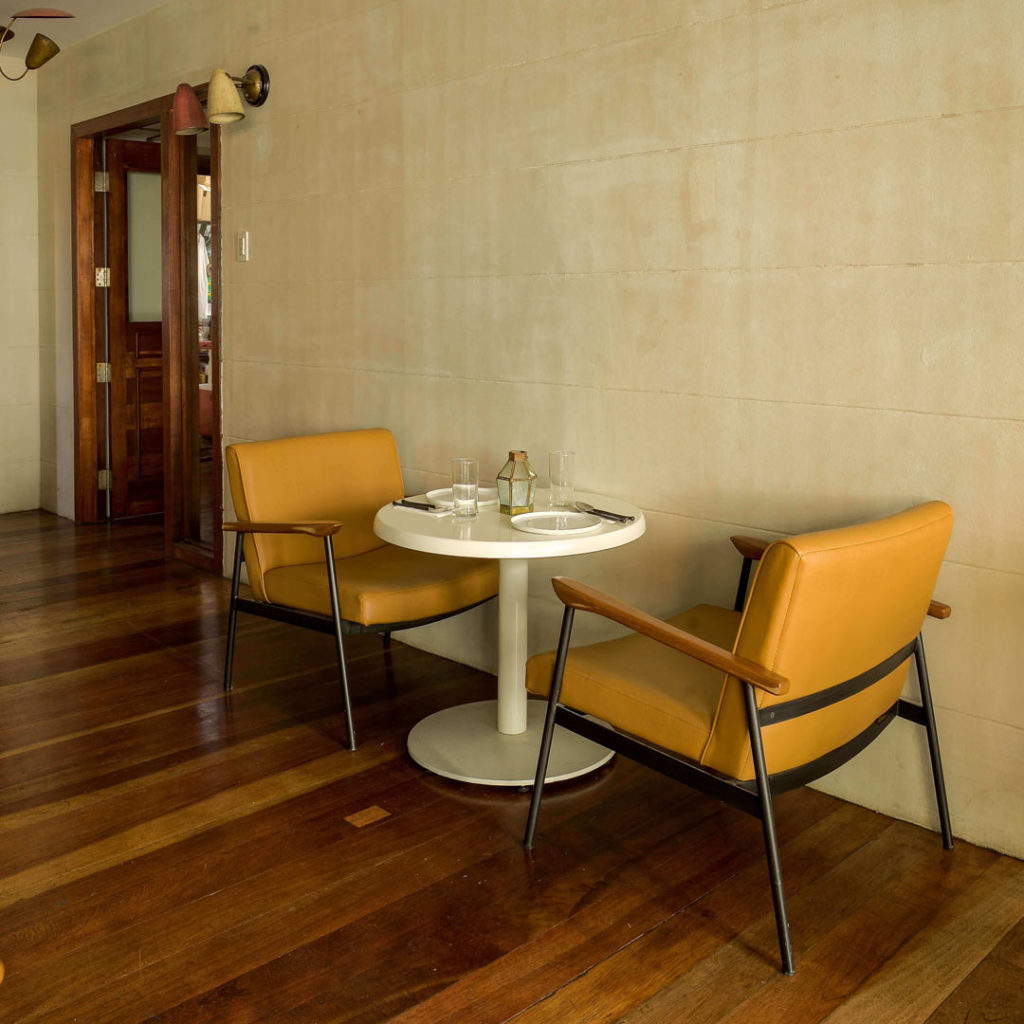
To find their front door, just look for the staircase next to what seems to be a flickering box lamp on the wall with their name shining out to Enriquez street – one of the more quiet streets of Poblacion. Walking up you’ll see a wooden door to your left and a white door to your right. The wooden door leads to Lampara, while the white one leads to, what I can presume, a trespassing violation.
The moment that you walk in, you’re instantly welcomed with mixed colors and furnishings, from mismatched chairs to tables of varying heights. Eclectic but homey at the same time, almost like the apartment of an eccentric uncle you would visit during vacations. A high ceiling and tall glass windows give an open and airy feel in good contrast to its concrete walls and wooden flooring.
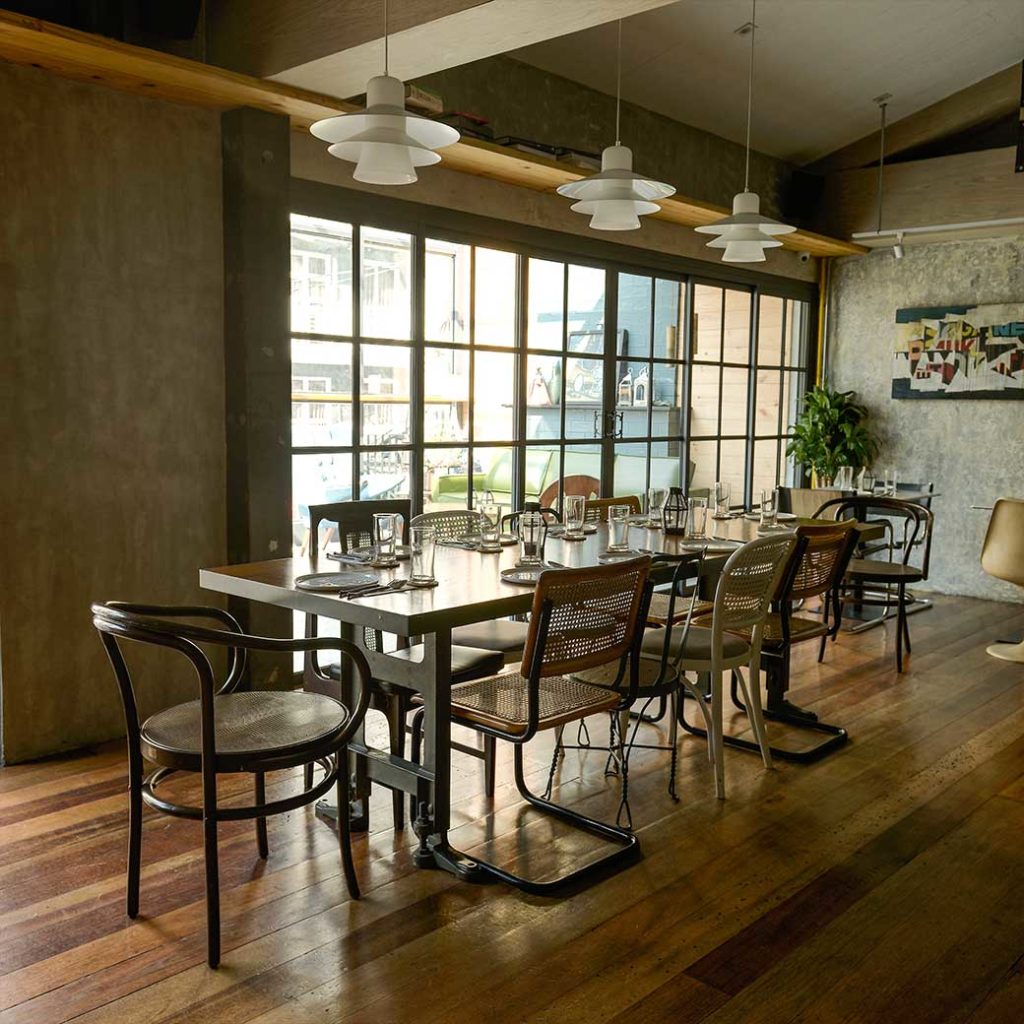
All the bright elements inside the room are brought together in harmony by the bar area. With its deep teal paneling and an iron beam column decor, this corner anchors the entire aesthetic of Lampara, modern and rustic, which expands even up to their menu.
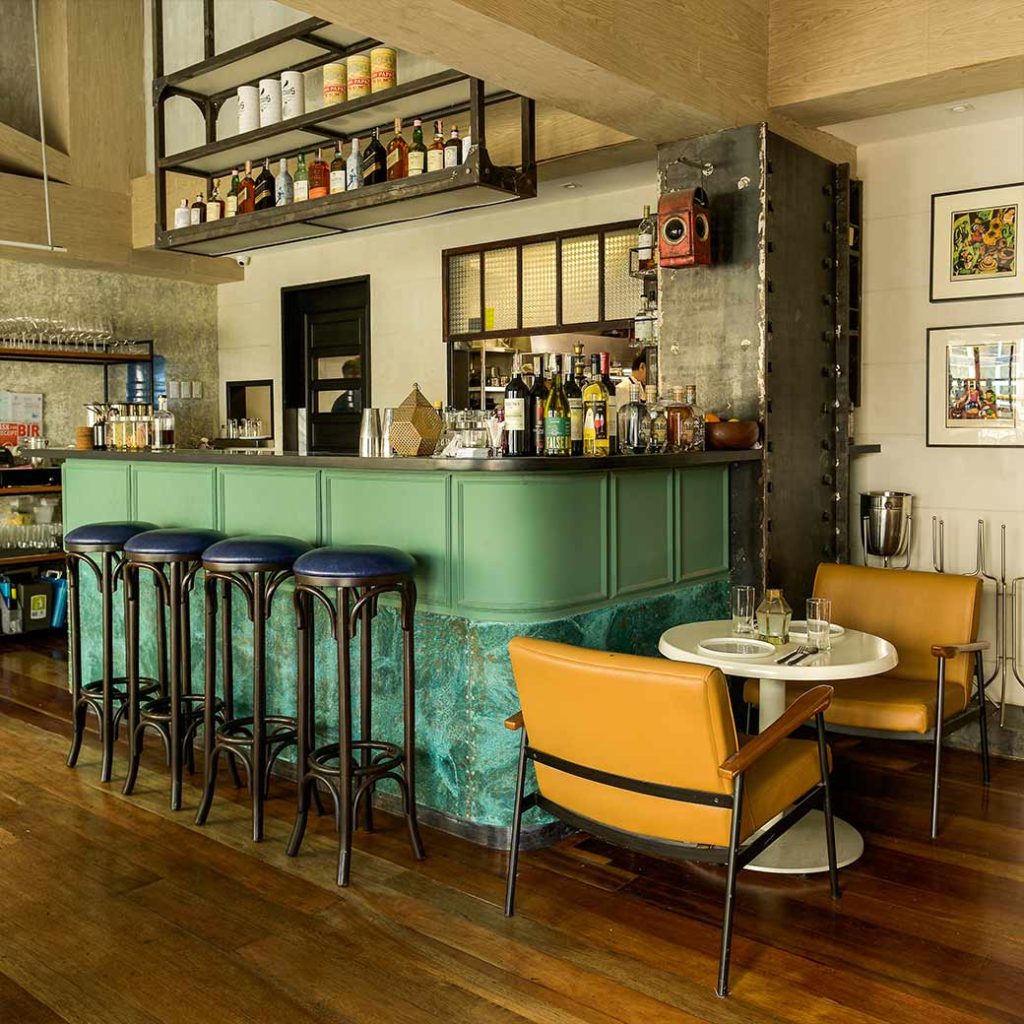
Less Really is More
When it comes to menus, there’s more to gain in simplicity. A lean menu shows what a restaurant really stands for— an identity that physically manifests in just a few dishes. Lampara’s menu is a prime example of this. With only five small plates, five big plates, and three enders; Lampara’s culinary philosophy is clear in presenting Filipino flavors in a new light. I sat down with RJ Ramos, one of the owners and cooks, to talk about this unique philosophy.
Each item on their menu is based on a classic Filipino dish, which they would then “bend,” as RJ would call it. Taking the key flavors and elements of that classic dish, breaking it apart, and putting it back together in a new form.
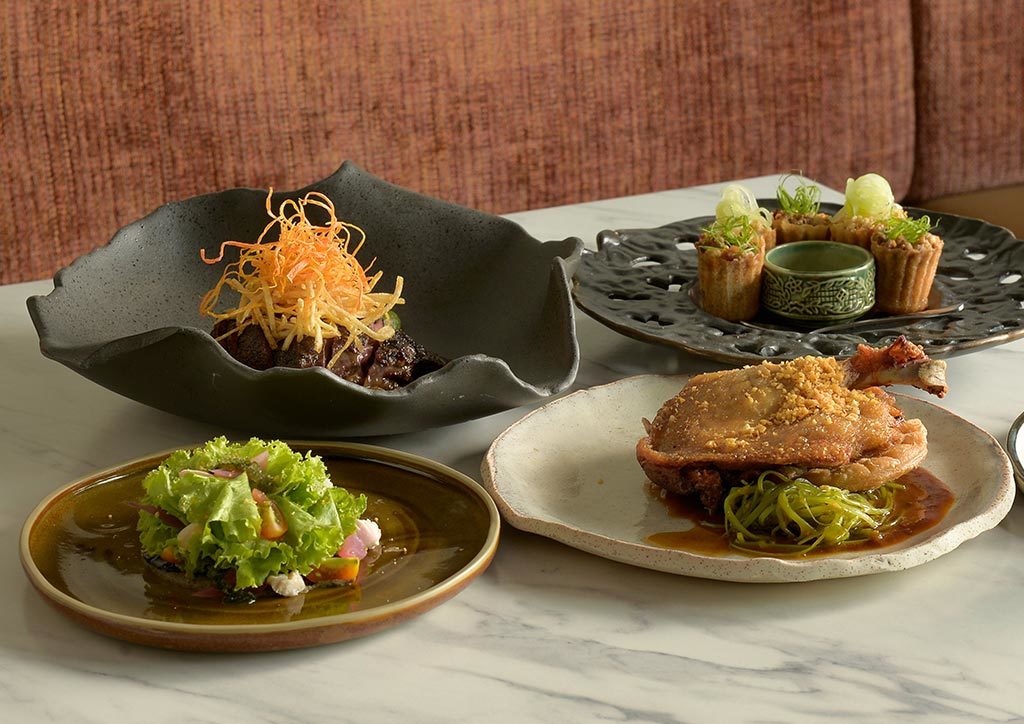
This deconstructive approach to their food came about at their previous jobs. They were tasked to take their guest chef from Singapore out to eat at a Filipino restaurant. Going through the list of places to try, they realized there was so much more that Filipino restaurants can do with the cuisine. There wasn’t a place doing anything new with Filipino flavors. They then decided to fill that gastronomic gap and opened Lampara back in December 2018.
Small Plates
Starting off with some finger food, we begin with the Rice Cups, their lumpia-inspired dish. They’re crispy little bite- sized cups made of rice flour with two kinds of fillings and Sinamak vinegar on the side.
The first filling: longganisa, ubod, aligue, and garnished with green leeks is a bomb of salty savory flavors. The longganisa and aligue (crab fat) give the right amount of rich savoriness without being too salty. The ubod (heart of palm) acts as a sponge, absorbing the juices from the other ingredients to really hit hard on that flavor profile.
The second filling: bean sprouts, peanuts, tofu, and topped with shredded cucumber is a fresh and meatless alternative to the first filling. This one has a brighter taste with the bean sprouts adding extra crunch. The tofu and peanut give that depth in flavor. The Sinamak vinegar goes well with both fillings. Acting as a sharp cut to the savoriness of the first while enhancing the bright taste of the second.
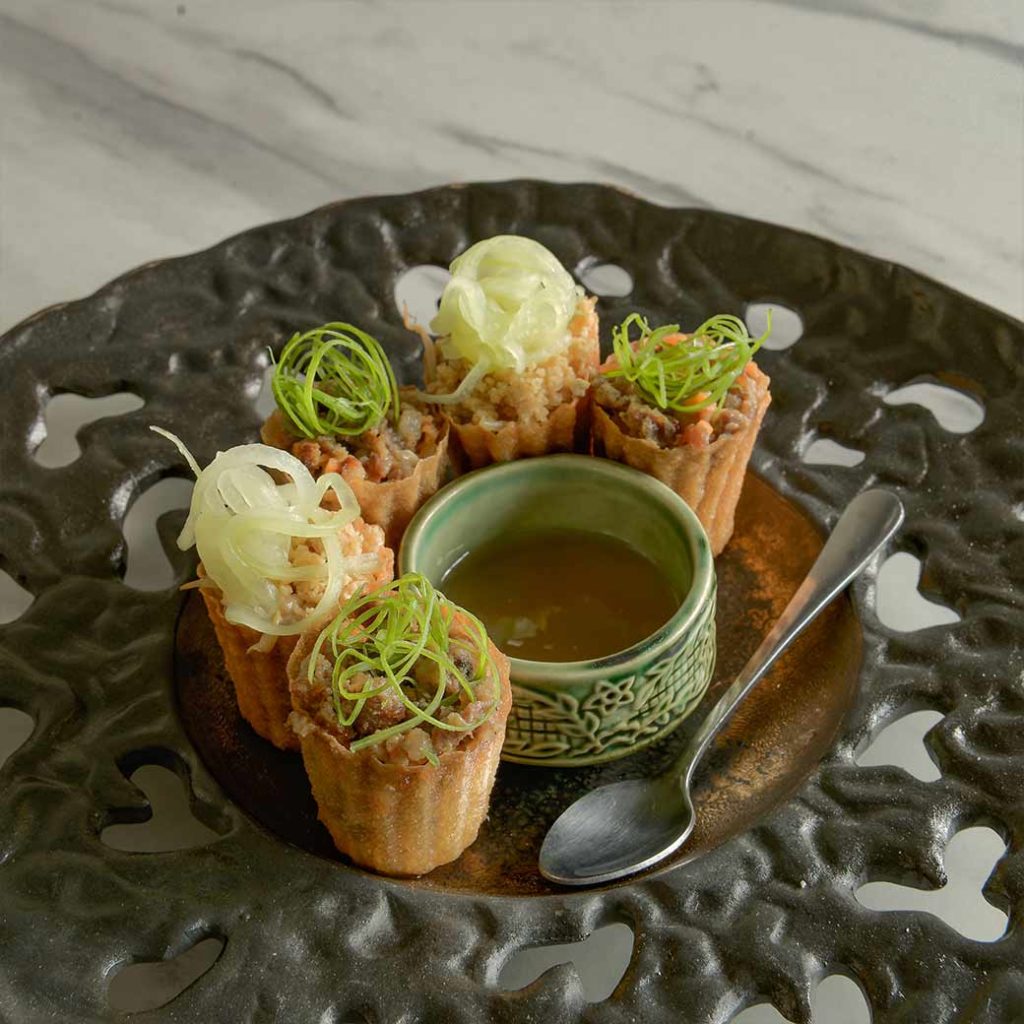
Rice Cups 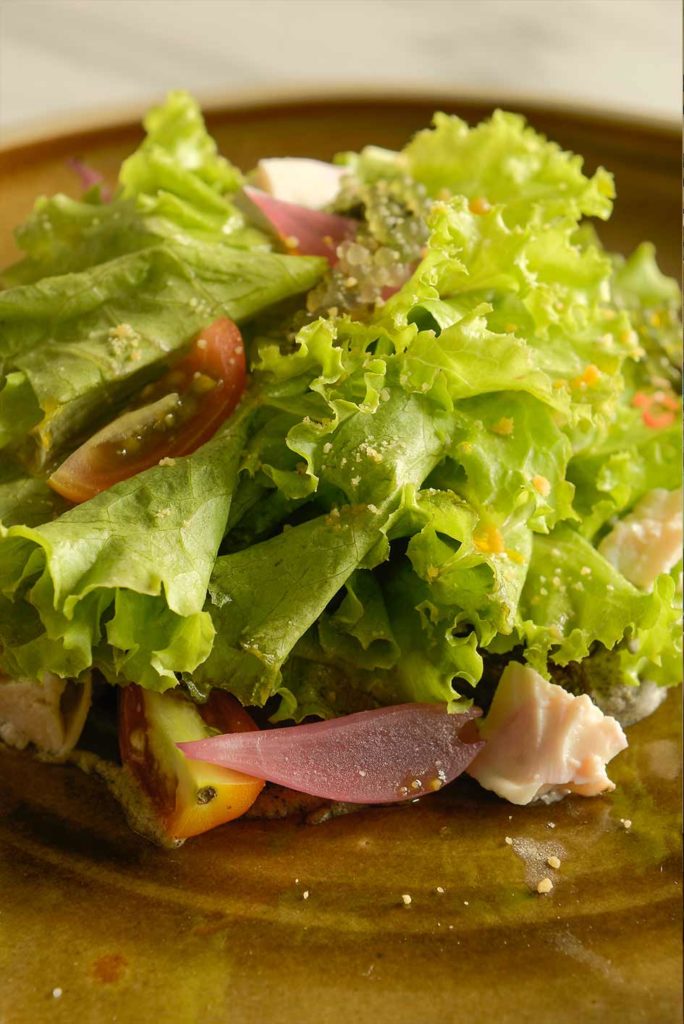
Ensalada
The next small plate is their Ensalada, their take on the local ensalada. This salad packs a double punch in flavor. The first jab comes from the crisp frisse (they used lettuce for this serving) tossed in a pungent dressing of tinapa oil and guinamos (anchovy bagoong). The second blow comes from the eggplants under the greens with a rich baba ganoush for a soft and warm end to the starter salad.
Big Plates
What a better Filipino staple to play around with other than adobo? Their Duck Leg is a unique interpretation of the signature salty sour stew. The danger of cooking duck is running the risk of it being too greasy. Duck is fattier than chicken and, if not handled properly, may leave the meat too oily and cause a bad aftertaste. Lampara has skillfully managed this as their duck confit is juicy and has just enough fat for flavor. The skin, which is also one of the best parts, has the right amount of crunch.
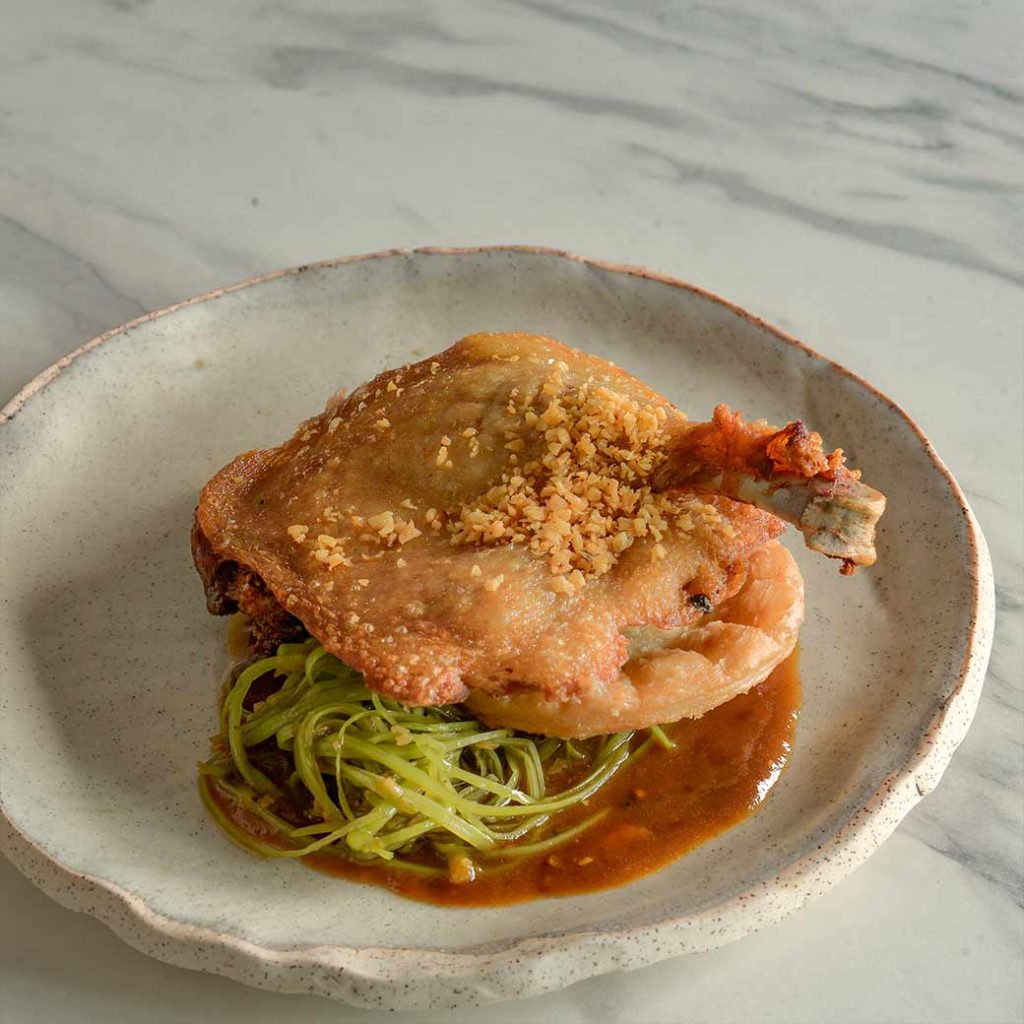
On that crunchy note, a surprise lies waiting right under the leg with another serving of duck. This time in the form of liver pâté. A kaliskis empanada with a velvety pâté filling complements the meatiness of the duck leg. But it’s the sauce that really brings everything together. The sauce may seem inadequate in quantity at first but you won’t need much. A strong taste from soy sauce and pungent garlic makes this a quality-over-quantity kind of sauce. A small dollop can go a long way and will be a favorite for garlic lovers. Just make sure you have breath mints at hand if you get this dish.
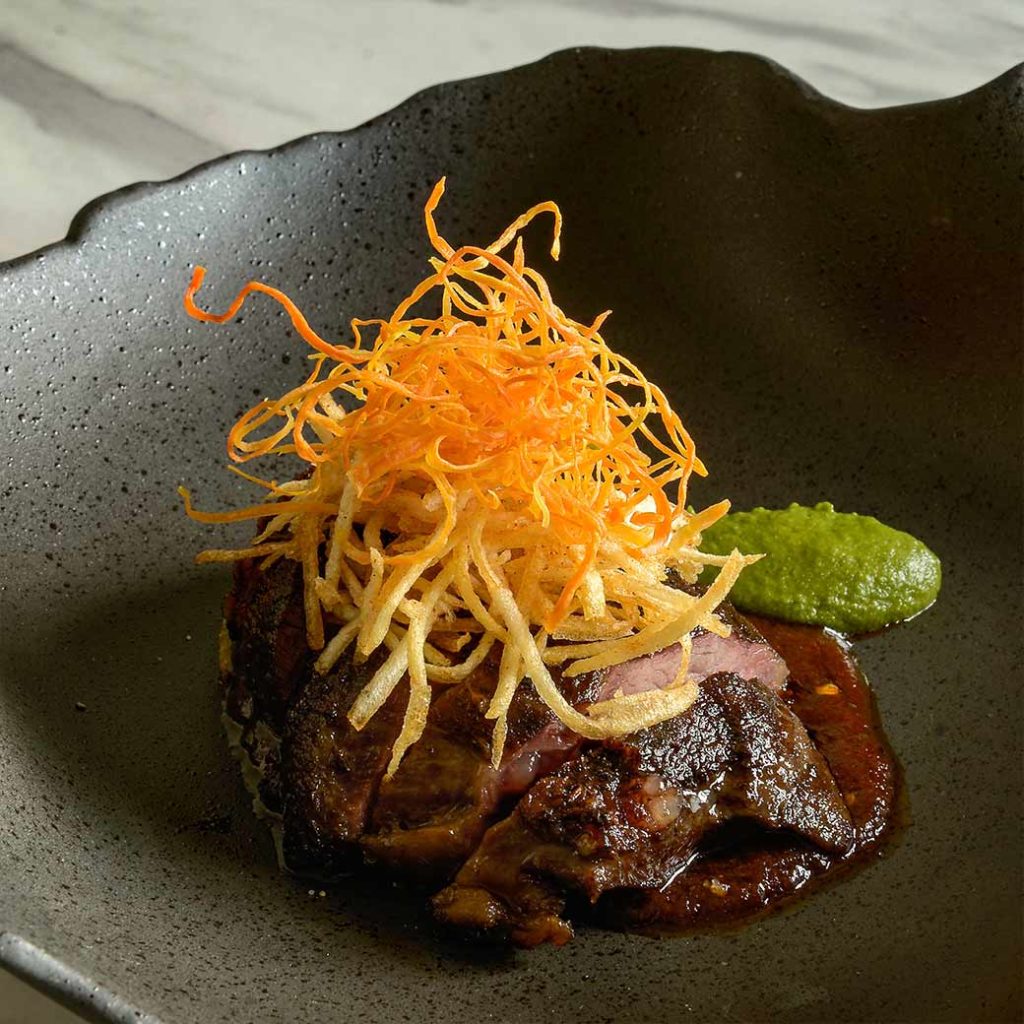
A bestseller from their big plates is the Veal Steak, which RJ also highly recommends. A kaldereta based dish, the veal cheek is cooked at a pink medium and sits on a mellow tomato-based sauce. A dollop of green pepper purée on the side for controlled bitterness. Finished with a topping of shoestring potatoes and carrots for texture. Visually, it’s a beaut. The pop of color from the carrots, potatoes, and purée liven up the brown richness of the steak and sauce. In terms of taste, it’s as good as it looks.
Enders
Unlike the rest of their menu, their Enders don’t really base themselves on a local dish specifically. Instead, they’re a nostalgic reimagination of childhood treats. Case in point is their Yema & Tsokolate, which can be considered as the more adult version of both sweet treats. This delicately plated dessert is a spectrum of texture and sweetness.
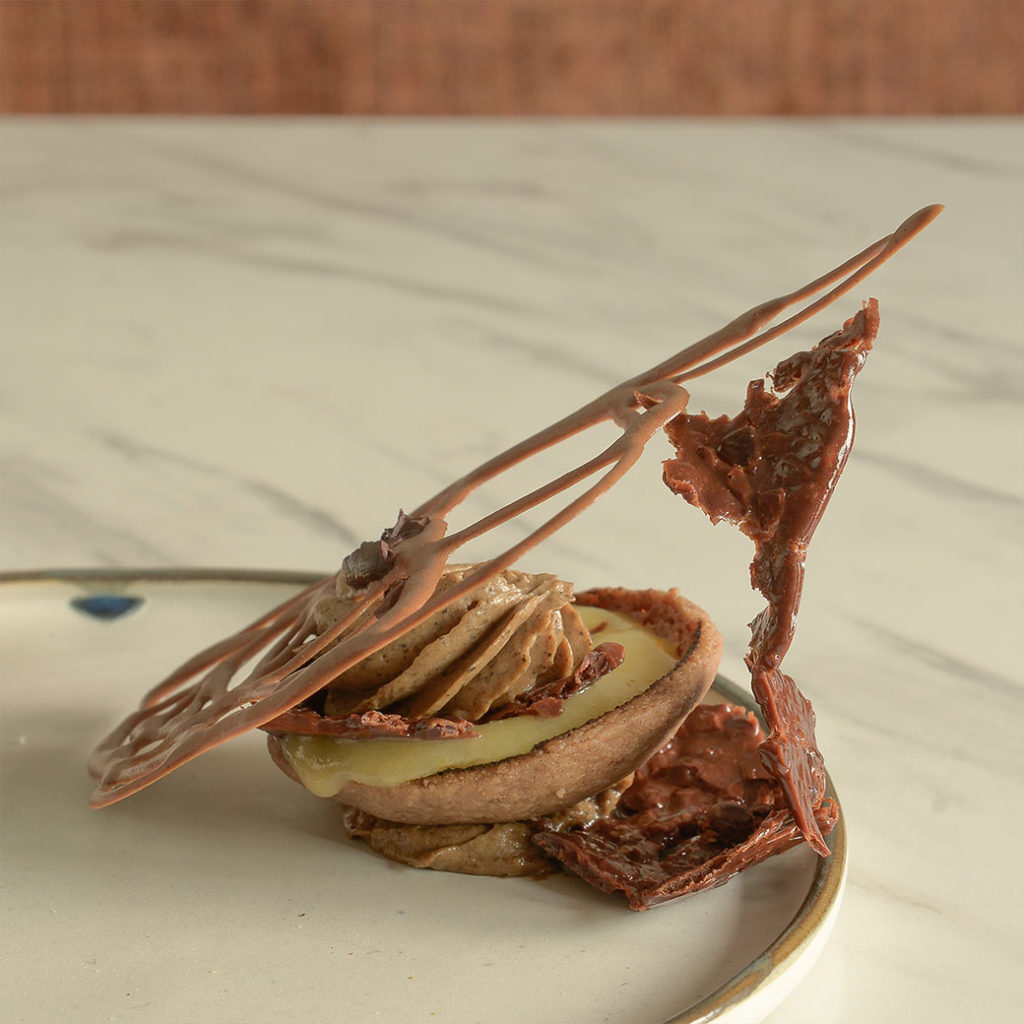
Composed of barley cream, tableya shortbread, tableya cream, torched yema, and rock salt, this dessert should be eaten in one spoonful to fully enjoy all the flavors. Each element gives its own sweet taste that doesn’t clash with the other. You get a mix of crunch and creaminess that makes for a sweet multi-layered end to your meal.
A Night Cap and A Chat
As we capped off the night with some of their signature cocktails, RJ remarks on possible prospects for their menu. “We want to represent other [Filipino] flavors. We don’t have something with gata (coconut milk) yet, or a sour dish like sinigang,” he laments on the future dishes they can venture into. Expressing their interest to tackle many aspects of the Filipino flavor palate and pushing them forward.
Lampara’s inventive yet humble take on local cuisine brings a sense of nostalgia with familiar tastes as well as excitement with their modern approach. RJ notes that many foreign establishments are being recognized for their exploration of Filipino flavors. It only makes sense that if anyone should be leading this exploration it should come from within the country – the Filipinos in the Philippines.
Lampara Neo-Filipino Bistro is located at 5883 Enriquez, Poblacion, Makati, 1210 Metro Manila. For reservations contact (0917) 173-5883.
Read our cocktail review of Lampara here.
Photos by Miguel Abesamis





